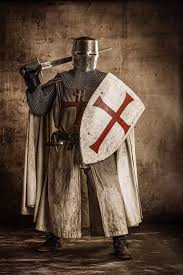The Knights Templar is a name that echoes through history, often shrouded in mystery and intrigue. This article explores their origins, roles, myths, and the truth behind their legacy. Were they a secret society, a military order, or something else entirely? Join us as we delve into the past to uncover the facts and the fiction about one of the most famous groups in history.
Introduction
The Knights Templar have long been a subject of fascination, often portrayed in popular culture as secretive, mystical, and possessing untold power. But who were these men, and what was their true purpose? In this article, we’ll explore the history, roles, and legacy of the Knights Templar to understand whether they were indeed a secret society or simply a military order.

The Origins of the Knights Templar
To understand the Knights Templar, we must first look back to the 12th century. Formed during the Crusades, they began as a small group of knights dedicated to protecting Christian pilgrims traveling to the Holy Land. This sect grew rapidly, becoming a powerful military force with vast resources and influence.
- The Birth of the Order
In 1119, a small group of knights led by Hugh de Payens arrived in Jerusalem, seeking permission from King Baldwin II to establish an order dedicated to safeguarding Christian pilgrims. Their modest beginnings would soon transform into a formidable organization with a global reach. - Protection and Expansion
Initially, the Knights Templar focused on protecting pilgrims and reclaiming territories in the Holy Land. Over time, their role expanded to include economic, diplomatic, and military functions, making them a powerful force in both the Christian and Muslim worlds.
The Roles of the Knights Templar
The Templars were not just warriors. They were also financiers, diplomats, and even early bankers. Their roles extended far beyond what we typically associate with medieval knights.
- Military Might
The Knights Templar were best known for their role as fierce fighters in the Crusades. They took part in numerous battles, including the famous Battle of Hattin in 1187. Their military prowess was unmatched, and they were seen as elite warriors, highly trained and fiercely loyal. - Bankers and Financiers
One of the Templars’ most unique roles was as financial innovators. They established the first European banking system, offering services like letters of credit and deposit boxes. This allowed Christian pilgrims to travel safely without carrying large sums of money, thereby reducing the risk of robbery. - Diplomatic Role
The Templars acted as intermediaries between European monarchs and Muslim leaders. They played a crucial role in negotiating peace treaties and were often used as a bridge in complex political situations due to their neutral stance and vast network of connections.
The Myth and Reality of the Knights Templar
Despite their historical significance, the Templars have been shrouded in myth and legend. Were they really a secret society with hidden agendas, or were they simply a powerful religious order?
- Secret Society or Open Order?
Contrary to popular belief, the Knights Templar were not a secret society in the modern sense. Their structure was known to both supporters and adversaries, and their activities were documented extensively. While they had rituals and vows, these were standard for monastic and military orders of the time. - The Allegations of Heresy
In 1307, charges of heresy were leveled against the Templars by King Philip IV of France. Many believe this was driven by political and financial motives rather than any secret religious practices. The charges included accusations of idolatry and denial of Christ, but evidence of such practices remains scarce. - The Treasure of the Templars
One of the most enduring mysteries is the supposed treasure of the Knights Templar. Despite numerous claims and supposed discoveries, no definitive evidence has been found. The concept of hidden treasure has fueled countless myths, books, and even popular media representations.
The Fall of the Knights Templar
The downfall of the Templars is a dramatic story, marked by political intrigue, betrayal, and violent suppression. In 1307, King Philip IV ordered the arrest of all Templars in France, marking the beginning of the end for the order.
- Arrests and Trials
The arrest of Templars was a coordinated effort by Philip IV, who sought to eliminate a powerful rival to his authority. The charges included heresy, witchcraft, and financial corruption. The resulting trials were often conducted under duress, with many knights coerced into confessions. - Dissolution and Legacy
Under pressure, the Pope eventually disbanded the Knights Templar in 1312 with the issuance of the Papal bull “Vox in excelso.” The order’s assets were seized, and many Templars were executed or imprisoned. Despite this, the legacy of the Templars lived on through various myths, secret societies, and modern organizations claiming their heritage.
The Impact of the Knights Templar Today
The Templars’ influence extends beyond the medieval period, with their legacy embedded in culture, conspiracy theories, and modern secret societies.
- Cultural Influence
In literature, art, and film, the Templars are often depicted as secretive and enigmatic figures with hidden knowledge. This portrayal has helped perpetuate the myth of the Templars as custodians of hidden truths, such as the Holy Grail or the Ark of the Covenant. - Modern Templar Movements
Today, several organizations around the world claim to be descended from the original Knights Templar. These groups range from historical societies dedicated to research and preservation to more obscure organizations with spiritual or mystical beliefs. - The Role of Templar Myths
The Knights Templar have become a symbol of mystery and intrigue, inspiring conspiracy theories that range from secret banking empires to secretive religious practices. These myths continue to capture the imagination of people around the world.
The Truth Behind the Templars
The reality of the Knights Templar is less glamorous than the myths that surround them, but understanding their true nature is essential to separating fact from fiction.
- A Military Order with a Religious Purpose
The Templars were primarily a military order, formed to protect Christians in the Holy Land. Their religious observances and vows were similar to those of other monastic orders, such as the Cistercians, focusing on poverty, chastity, and obedience. - The Legacy of the Templars
Despite their downfall, the Templars left a lasting legacy in the form of banking, military strategy, and even aspects of modern Freemasonry. Their influence can still be seen in the structures of secret societies today. - Seeking the Truth in Myth
The Templars’ story is a blend of fact and fiction. While they were not a secret society in the sense we understand today, their role in history was significant and multifaceted. The myths that surround them reflect more about our modern anxieties and desires for hidden knowledge than about the actual history of the order.
Conclusion
The Knights Templar were much more than the secret society often portrayed in fiction and popular culture. They were a powerful military order with a religious mission, economic influence, and a complex legacy that continues to intrigue and inspire. Understanding the truth behind the myths allows us to appreciate their real contributions to medieval society and the enduring fascination they hold in the modern world.
The Silk Road’s Cultural Legacy: How Trade Shaped Art, Architecture, and Cuisine
Unique FAQs
- What was the primary purpose of the Knights Templar?
- The primary purpose of the Knights Templar was to protect Christian pilgrims traveling to the Holy Land and to defend the territories Christians had recaptured during the Crusades. Over time, their role expanded to include banking, diplomacy, and military strategy.
- Why were the Knights Templar disbanded?
- The Knights Templar were disbanded in 1312 after being accused of heresy, financial corruption, and idolatry. The arrest and trial of Templars were influenced by political and financial motives, particularly from King Philip IV of France, who sought to eliminate their power and influence.
- Were the Knights Templar really involved in secret rituals or hidden knowledge?
- While the Templars had specific rituals, vows, and religious observances, there is no concrete evidence to suggest they were involved in the secretive and mystical practices often associated with them. The myths about hidden knowledge are more reflective of later stories and conspiracy theories.
- What impact did the Knights Templar have on modern organizations like Freemasonry?
- The Knights Templar’s influence can be seen in modern organizations such as Freemasonry, which adopted some of the Templar’s rituals, symbols, and organizational structures. This connection has helped to perpetuate the Templars’ legacy as a secretive and influential force.
- How did the Templars’ role as financiers affect their downfall?
- The Templars’ banking practices made them powerful and wealthy, which made them targets for those seeking to eliminate this rival financial system. King Philip IV’s actions were driven partly by a desire to control their assets and eliminate a competitor.


